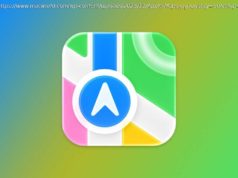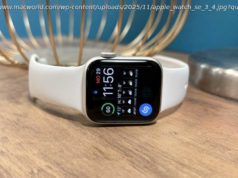The Windows 10 October Update is just around the corner. We round up the latest Windows 10 news, focusing on new features and updates to Microsoft’s desktop-, laptop and tablet operating system.
Released on 29 July 2015, Windows 10 h as now seen four major updates with a fifth imminent:
It’s expected sometime in October as the name suggests, and will bring with it a small number of key new features and a hoard of smaller, behind-the-scenes improvements.
Codenamed Redstone 5, the October 2018 Update will include new features such as Cloud Clipboard, a dark mode for File Explorer, an updated Snipping Tool, a re-designed Game Bar, re-thought search experience and more.
A relatively new app – Your Phone – aims to replicate the sort of synchronisation iPhone users get with their Macs and the latest feature is the ability to send texts from the Windows 10 Your Phone app. This works only with Android for the moment: whether it will ever arrive for iOS remains to be seen. Of course if you have an iPhone and use Windows 10, you can already use the Whatsapp app to send messages from the comfort of your PC keyboard.
Unfortunately, one of the headline features won’t be in the update. Windows Sets is delayed and will be released later on, probably in spring 2019. The feature works like tabbed browsing but can also group apps. You can see this demonstrated in the video above.
Assuming your PC is already running Windows 10, you should receive all updates, even the major ones, automatically when they are released. Whenever a big update is available, you should see a pop-up notification in the bottom right corner of your screen saying a Windows Feature Update is ready, along with options to install it now, schedule a time to install it later or remind you in a few days.
However, you can check for updates manually by going to Start, Settings (the cog icon), Update & security, Check for Updates. The Creators Update will be available in the same place.
You can start installing the update manually. To do this download and run Microsoft’s Update Assistant. This will walk you through the process, including checking if your system is compatible.
Alternatively, you can use the download tool from Microsoft. Choose Create installation media for another PC, then select the language, edition and whether you want 32- or 64-bit. You can then use the tool to copy the files to a bootable USB drive or a bootable DVD. Once this is complete you can boot from the drive or disc and follow the on-screen instructions to install the Windows 10 update.
New features are being tested all the time by ‘Windows Insiders’ who have opted in to receive beta versions of Windows 10 before they’re released to the general public. You too can sign up to the Windows Insider Program. Just bear in mind these versions could contain bugs.
But you’ll also get to try out new features and let Microsoft know if you like them or not. One feature Microsoft is experimenting with is Sets, which you can see demonstrated in the video above. It’s one of the most radical shake-ups to multitasking for over two decades. Put simply, Sets means apps have tabs so you can group things together and – in theory – manage them more easily.
If you’re still on the Fall Creators update, there are a few headline features in the April Update you might like including Timeline, which allows Windows 10 devices to resume apps and activities – exactly where you left off – even if you pick up a different device. There’s also Focus Assist and updates to the Edge browser, plus more updates to the Dictation service.
Timeline is the major new feature in the Spring Creators Update. It’s part of the existing Task View feature. When you click on the Task View button you’ll see not only the current apps and windows you have open, but you can scroll down to see the stuff you were working on previously that day, or up to 30 days ago.
This will also work across your Windows 10 devices because the information is stored in Microsoft Graph. This is what Microsoft calls an “intelligent fabric that helps connect dots between people, conversations, projects, and content within the Microsoft Cloud”.
In practice, it means you can do whatever you need to do no matter which device you happen to have picked up. Here’s how to use Timeline.
Focus Assist is fantastic when you want to get things done without being distracted by a notification from Facebook or Twitter. You can turn it on manually or set it to turn on automatically at certain times. When it turns off, or when you turn it off, you’ll get a summary of what happened while you were working. Focus Assist also lets you choose specific people whose communications will still get through while it’s turned on.
The April 2018 update also brings changes to the Settings app, a new Cortana Notebook and Lists app and Nearby Share. The latter lets you send links, documents, photos and more to nearby devices via Bluetooth. There’s also a new reading mode in the Edge browser.
In the April 2018 update, Microsoft concentrated on improving Windows 10’s accessibility features. It also makes them a lot easier to find and groups them according to their function: hearing, vision, interaction.
Here’s an example of what it looks like with sections for ‘make everything bigger’ and ‘make everything brighter’:
Soon the virtual assistant built into Windows 10 will be able to communicate with Alexa, Amazon’s assistant built into Echo and Fire devices.
The two companies are working together so that you’ll be able to use the capabilities of both assistants regardless of whether you’re using a Windows or Amazon device. For example, you’ll be able to access Cortana to check and schedule meetings through an Amazon Echo, or turn on your smart lights when sitting at a Windows 10 PC, via Alexa.
After a court battle in Germany Microsoft has promised it will stop the practice of downloading many gigabytes of Windows upgrade files without the user’s consent.
This was one of the controversial practices it employed in the run up to the original launch of Windows 10. Even if you didn’t want to upgrade, up to 6GB of installation files were downloaded to some PCs and laptops without the owners’ knowledge.






